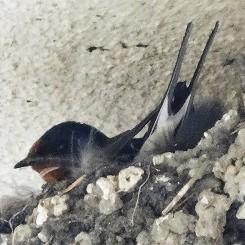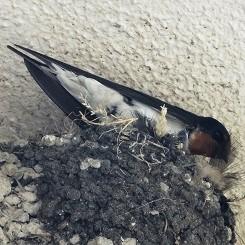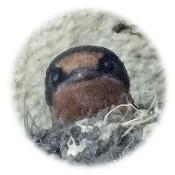


"Ginza Swallows" are nesting again this year.
Matsuya East Building, one of the three nesting sites that have been confirmed in recent years, crossed the sea far away from Southeast Asia, which is a wintering area, this year, and showed up.
It is said that old nests are often repaired and used, but this year, in addition to the old nests, nests are also nested on the cover of a nearby fluorescent lamps.
It hatches in about two weeks after incubating, and for another three weeks, the parent swallows are said to carry food.
In the harsh environment of urban areas, which cannot be said to be blessed as a growth environment, the hard childcare appearance shown by the parent bird is impressive and can be watched closely.
It preys on insects that live while flying in the air and descends on the surface of the water to drink water.
The number of nesting locations in Ginza, which is said to have been nine locations 30 years ago, has now dropped sharply.
Nevertheless, swallows are managed to survive in Ginza because they are relatively blessed with street trees that are the source of insects, and the existence of the natural treasure trove of the Imperial Palace, many of which have been reclaimed, but the waterside of the excavation site, which is a heritage of Edo. In addition to the natural environment, it is thought that the social environment, such as the gentle gaze of the city that accepts swallows and warmly watches the nest, greatly contributes.
I would like to warmly watch the nests of as many chicks as possible so that you can meet swallows again next season.

